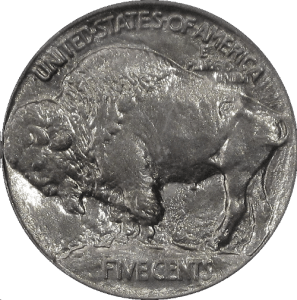A Token of Radio City
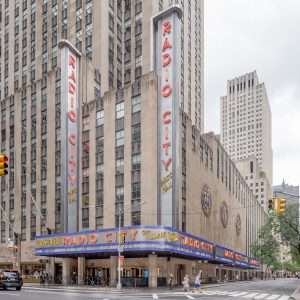
Radio City Music Hall
(Photo by Ajay Suresh used under the CC by 2.0 license)
Radio City, called the Showplace of the Nation, was developed along with Rockefeller Center in 1930-32 for the Metropolitan Opera. The construction of Rockefeller Center was funded by the Rockefeller Foundation, headed by John D. Rockefeller, Jr. When the opera backed out, Rockefeller negotiated with RCA to continue the construction of Radio City as a multimedia showplace.
My first visit to Radio City and Rockefeller Center was in 1968 during the winter break from school. My (late) mother, who grew up on Coney Island, understood that New Yorkers did not take the time to see the sights in their own city. To make up for the time she lost as a child to see New York, she took her children to play tourist during school breaks.
The trip to Manhattan was to see Saint Patrick’s Cathedral, Rockefeller Center, including the ice rink, and then see a movie at Radio City. I do not remember the movie we saw, but my mother later told me that they showed three short movies, and it cost 25-cents for my brother and me (that’s $2 accounting for inflation).
Before going to the movie, we toured the main stage where the famous Rockettes performed. As part of the tour, we saw the Rockettes practice and visited with a few on stage. I remember being amazed at how long their legs were — which is not bad for an eight-year-old!
Many years later, I worked for NBC and visited Radio City often. When NBC was involved in a live production in Radio City, I used my connections within NBC Sports to watch the rehearsals from the production trucks. Before the final rehearsal, I was allowed into Radio City to see the performance. Later, I returned to my office on the 16th floor, two floors above David Letterman’s offices.
The aluminum medal is 40 mm in diameter. On the front is an image of Radio City and the reverse has a view of the main theater looking at the stage. It is a well-executed image that uses the unique design of the theater to give the image depth.
While taking another look at the medal, it reminds me of a Mardi Gras token.
As I keep finding these great collectibles, I have to develop a better way to store them. My current system cannot handle my recent expansion, especially when the tokens and medals are different sizes. I will report what I come up with.
Weekly World Numismatic News for March 22, 2020
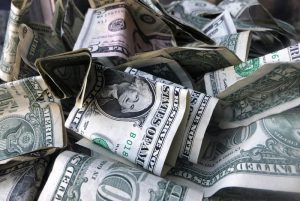 As the COVID-19 crisis expands, news outlets have been asking how life will change once we medical science can catchup and conquer this disease. Numismatically, there is a question as to whether the currency will survive.
As the COVID-19 crisis expands, news outlets have been asking how life will change once we medical science can catchup and conquer this disease. Numismatically, there is a question as to whether the currency will survive.
There has been concern about spreading the virus on our currency. According to the Associated Press, “Experts say cash does carry a risk of transmitting the virus, but the risk from cash so far is small compared with other transmission routes.”
Is it possible that a virus-contaminated banknote could transmit the virus? Scientists are not sure. Even considering the studies that show currency could be as dirty as your smartphone, there is no definitive answer.
“It’s not impossible that there might be traces of virus on dollar bills but if you wash your hands it should provide adequate protections, you shouldn’t need anything else,” said Julie Fischer, a professor at the Center for Global Health Science and Society at Georgetown University, on C-SPAN according to the AP.
While countries like South Korea and Poland have withdrawn paper money and has gone as far as burning it, banks in the United States are reporting the opposite effect. Fear has led some customers to make substantial cash withdrawals at banks and ATMs. Some banks are raising withdrawal limits.
The run on the bank is similar to the experiences in 2001 following the attacks of 9/11. Banks reported that customers were withdrawing cash at a higher rate than before the alleged Y2K crisis. Although reports have not reached that level, it is possible to exceed the 2001-2002 withdrawals if the COVID-19 crisis continues for very long.
The Bureau of Engraving and Printing publishes its production numbers monthly. It will be interesting to see if they had to increase production in March to meet increased demand. It proves that cash is still king, and the thoughts of a cashless society can be put away for a while.
And now the news…
 → Read more at qz.com
→ Read more at qz.com
 → Read more at apnews.com
→ Read more at apnews.com
 → Read more at marketoracle.co.uk
→ Read more at marketoracle.co.uk
 → Read more at standard.co.uk
→ Read more at standard.co.uk
Weekly World Numismatic News for March 15, 2020
Following Saturday’s article, an article appeared in my newsfeed with tips on how to start building a collection of Buffalo Nickels.
CNN interviewed noted numismatist Charles Morgan. The article is a good synopsis of collecting Buffalo Nickels.
Buffalo nickels are a favorite of a lot of people. Designed by James Earle Fraser, the Buffalo Nickel was struck by the U.S. Mint from 1913 to 1987. The obverse of the coin features a Native American that Fraser said was a composite design of three chiefs, and the reverse is a buffalo that Fraser said was modeled after Black Diamond, an American bison he found at the Bronx Zoo. Both claims by Fraser have been controversial since several American Indian Chiefs claimed to have been Fraser’s model, and Black Diamond lived at the Central Park Zoo. In either case, it is a beautiful coin and an excellent entry to collecting.
Buffalo nickels are very available coins with a few exceptions. Beautiful examples with full dates and at least three-quarters of the buffalo’s horn still visible are available at reasonable prices.
For someone starting a Buffalo nickel collection, you might want to consider starting with a date and type set. Going this route would spare the beginning collector from trying to find the Type 2 1913-D and 1913-S coins, which can be expensive.
If you complete the goal of the date and type set, then try to fill in the rest of the coins to create the full date and mintmark set.
Another idea is to use the Buffalo nickel as the basis to collect other coins with buffaloes as part of the design. In 2011, I presented a Herd of Buffaloes type collection. Maybe it can be something to do while riding out the current situation.
Maybe, if we can attract new collectors using an article from CNN, we can encourage them to write more.
And now the news…
 → Read more at gulfnews.com
→ Read more at gulfnews.com
 → Read more at meadvilletribune.com
→ Read more at meadvilletribune.com
 → Read more at theunionjournal.com
→ Read more at theunionjournal.com
 → Read more at cnn.com
→ Read more at cnn.com
The Coronavirus and Numismatics in the short term
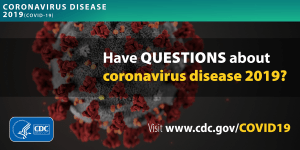 Now that the rollercoaster ride of this past week has pulled into the station, let us off, and is preparing for next week’s run, we can step back and assess our next move.
Now that the rollercoaster ride of this past week has pulled into the station, let us off, and is preparing for next week’s run, we can step back and assess our next move.
With the announcement of canceling of sports tournaments to the restriction on large gatherings and the declaration of states of emergency has caused everyone to rethink their short-term schedule. In numismatics, the canceling of the NCAA Men’s Basketball Tournament, dubbed March Madness, forced PCGS to cancel a launch they had scheduled with the Naismith Basketball Hall of Fame. PCGS was going to offer specially slabbed Hall of Fame commemorative coins as part of the coin’s launch.
Shortly after Maryland Governor Larry Hogan declared a state of emergency in Maryland, Whitman canceled the March expo scheduled for the Baltimore Convention Center. Stack’s Bowers Galleries, the official auctioneer of the Whitman Expo, will move their auction to their California offices and hold the auction online.
A few of the small local shows have sent notices that their shows will go on as scheduled. These are shows that are held in local meeting halls, hotel ballrooms, or other smaller facilities. Many times, the dealers outnumber the patrons. These shows will likely not exceed the 250 person limit expressed by the state of emergency.
Although the COVID-19 virus pandemic is something to worry about, we can get past the fears by following the common sense approach promoted by the Center for Disease Control and Prevention (CDC).
According to the CDC and the National Institute of Health (NIH), the only way the virus spreads is person-to-person through respiratory droplets. The virus does not live on surfaces that long. If everyone maintains the proper precautions, there should be no problem handling numismatic items. Dealers should take care in how they present their wares and their interaction with the public.
Collectors going to shows must also take precautions. If you are not feeling well, do not attend the show. Do not rub your face and then touch the merchandise. Wear gloves if you do not feel comfortable.
And please wash your hands!
Because of the way we do things, handwashing is one of the most effective measures to control the spread of many of our health issues, including COVID-19.
To put the importance of handwashing into perspective, the concept of basic sterilization did not exist during the Civil War. This lead to the rampant death of soldiers to infectious diseases, many of epidemic proportions. About two-thirds of the 660,000 deaths were because of infections. That number could have been much less if the doctors just washed their hands.
When you go to the smaller coin show, wash your hands before entering. Clean your hands frequently with a sanitizer that contains at least 60-percent alcohol. If you have alcohol preps, you can use those to wipe your hands then apply hand lotion to prevent your hands from drying out.
If you touch a lot of items, you should wash your hands in between. Wash them before diving into that junk box and after you are finished.
And do not touch your face!
We all have these habits that involve touching our face, hair, or other parts of our head. I know these habits are tough to change. As a member of the Society of Bearded Numismatists, I am regularly rubbing or scratching the area under my chin. I have been forcing myself to stop.
If you do not feel well or are uncomforatble, stay home.
The situation may cause temporary changes, but that does not mean cowering in the corner. Use the time to your advantage. Catch up reading those numismatic books on your show. Update your collection’s catalog. Organize new purchases.
You can organize family time around numismatics. Talking about coins and their history is better than watching everyone else panic on social media.
Weekly World Numismatic News for March 8, 2020
 Much of the news this week was by media outlets announcing local coin shows.
Much of the news this week was by media outlets announcing local coin shows.
While the big shows are delightful, local coin shows can be more fun. Smaller shows do not attract the type of crowd that you will see in a larger venue, like a convention center. Fewer people go to these local shows making it a more relaxed atmosphere.
Behind the tables at these shows are local dealers, some who may not be able to afford to set up at national shows. These are your neighbors. They are the ones you can go to for information and help you find that hard to find or intriguing coin.
The relaxed atmosphere of the small show makes it an excellent time to talk with everyone about collecting.
I will try to visit the Whitman Baltimore Expo in two weeks and the World’s Fair of Money in August. Between now and then, you might find me a few local shows in Maryland and Northern Virginia. Go check out a local show. You’ll be glad you did!
And now the news…
 → Read more at streetwisereports.com
→ Read more at streetwisereports.com
 → Read more at ancient-origins.net
→ Read more at ancient-origins.net
 → Read more at mydailytribune.com
→ Read more at mydailytribune.com
No 2021 Silver Dollars For You!
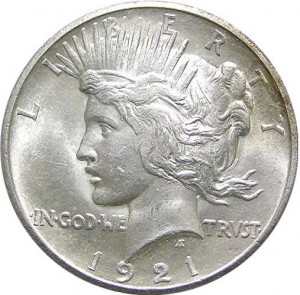 The 2021 commemorative coin calendar is full and it does not include a commemorative Morgan or Peace silver dollar.
The 2021 commemorative coin calendar is full and it does not include a commemorative Morgan or Peace silver dollar.
Last October, Congress passed the Christa McAuliffe Commemorative Coin Act of 2019 (Public Law No. 116-65) to be issued in 2021. In December, they passed the National Law Enforcement Museum Commemorative Coin Act (as part of Public Law No. 116-94). With two commemorative coin programs in 2021, there is no room for the 1921 Silver Dollar Commemorative Coin Act.
The odds of Congress creating a third commemorative program for 2021 is less than 1-percent.
When H.R. 3757 was introduced, the American Numismatic Association sent out a press release and asked the members to write their member of Congress. The numismatic press also carried that mantle at the beginning. Some suggested that a commemorative Morgan Dollar could be struck at the former mint in Carson City.
But that was in July, 2019, prior to the World’s Fair of Money.
During the World’s Fair of Money, a new Board of Governors was installed to allegedly lead the ANA. Since then, there has been little said by the ANA about H.R. 3757. This is the opposite of the response lead by Farran Zerbe.
Zerbe’s proposal for what became the Peace Dollar led to the appointment of a committee that lobbied Congress for the coin’s creation. It was not an easy road for the proposal, but Zerbe persisted, and a bill was passed.
Zerbe, who was ANA President from 1908 t0 1910, showed extraordinary leadership in getting this bill passed.
Many others have stepped up to represent the community with the support of the ANA and the hobby. Amongst the community’s achievements are the Bicentennial coins and the 50 State Quarters program.
Where is that support today?
Where has the ANA been since August 2019?
Like the 1921 Peace Dollar, a 2021 commemorative coin would not only highlight history but make sure the public knows about the ANA’s place in that history. It would introduce new collectors to one of the 20th century’s best designs and the ANA at the same time.
Aside from the public relations boost, 40-percent of the program’s surcharge would be paid to the ANA. With a mintage limit of 500,000 coins with a surcharge of $10 per coin, a potential $2 million could have been added to the ANA’s treasury.
A one-time payment of $2 million would provide a cushion of 35-percent, based on the ANA’s published 2019 budget. It would furnish a down payment on new education initiatives and outreach to promote the ANA’s growth.
The ANA has been business-as-usual with little said from the current Board.
It is difficult to understand why the ANA Board of Governors would let this opportunity pass. Is this a sign of leadership we are to expect during its two-year term?


